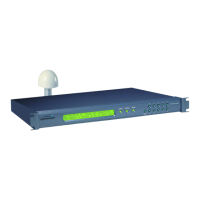I/O PORT DATA INPUT/OUTPUT
The above example sets the DAC value at approximately the middle of its range.
4.22 REQUEST DAC VALUE
This command allows the user to request the current DAC value.
• The user inputs $ N (HEX 24/HEX 4E).
• The unit responds with a five digit value followed by CR/LF.
4.23 ENTER NUMBER OF POSITION AVERAGES
This command allows the user to select the number of position averages that will be used to
calculate position in the start-up mode of operation. The command is comprised of five digits
representing a number from 00010 to 99999. Ten (0010) is the smallest number of position
averages that can be entered. The default is 200.
• The user inputs $Q (HEX 24/HEX 51) followed by four digits.
• The unit responds with OK CR/LF.
Note: The timing accuracy of this unit is directly related to the position accuracy. The more
accurate the position, the more accurate the time. It is recommended that for timing
accuracy of ≤ 300 nanoseconds, 2,000 to 5,000 position averages be performed to insure
an accurate position or input an accurate, surveyed position into the unit.
4.24 ENTER LOCAL OFFSET
This command allows the user to input a desired time offset (in ½ hour increments) whereas the
LCD or optional LED display and/or time outputs would be offset from the selected UTC or
GPS time by the number of hours input. All offsets entered (00.0 to 23.5) are positive and
calculated as west of the Greenwich Meridian (or input an accurate, surveyed position into the
unit).
• The user inputs $| (HEX 24/HEX 7C) 07.0.
• The unit responds with OK CR/LF.
The above example (07.0) inputs a local time offset to correspond to daylight savings time in the
Pacific Time Zone.
Symmetricom Inc ET6xxx ExacTime GPS TC & FG (Rev C) 4-13

